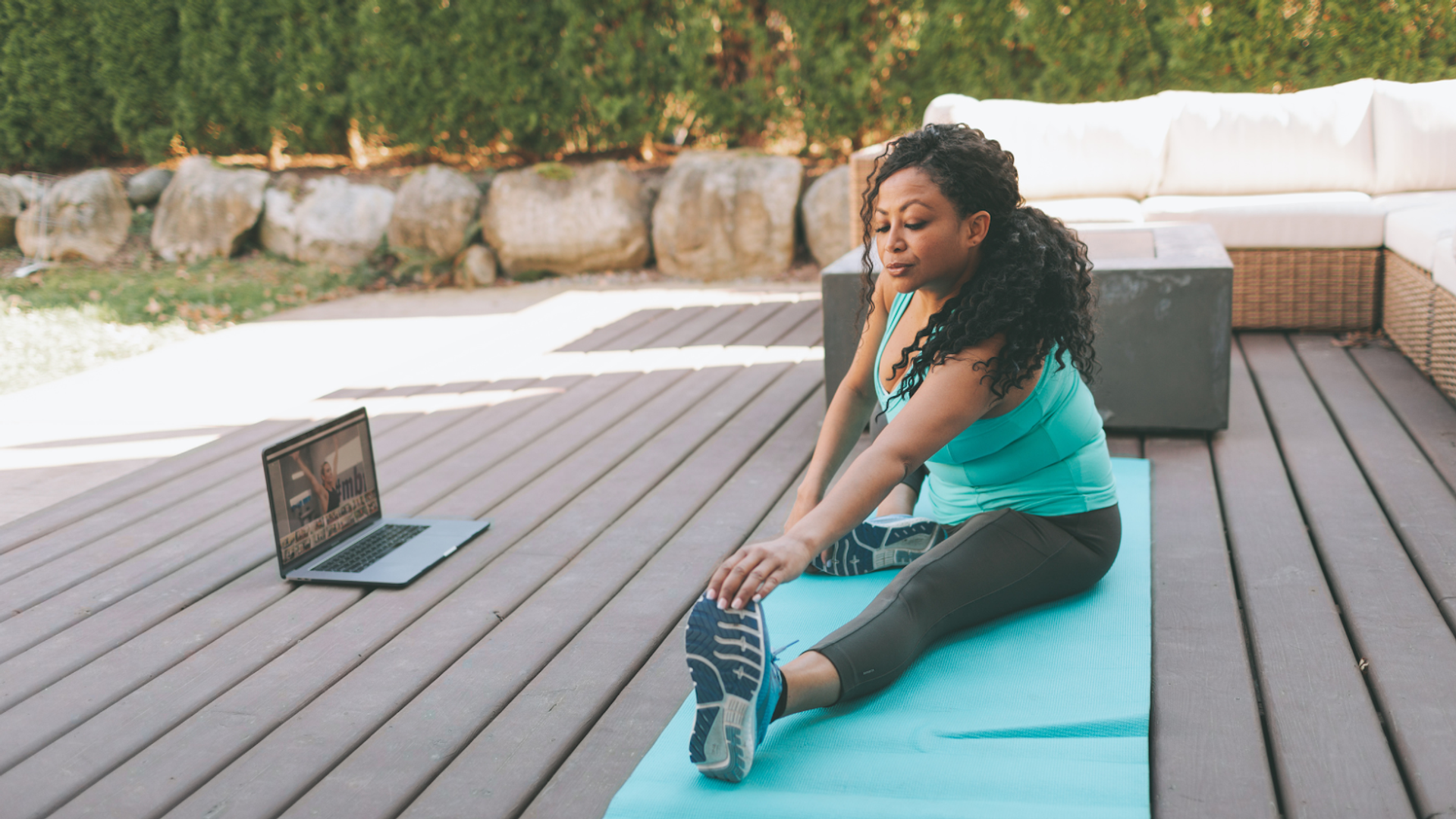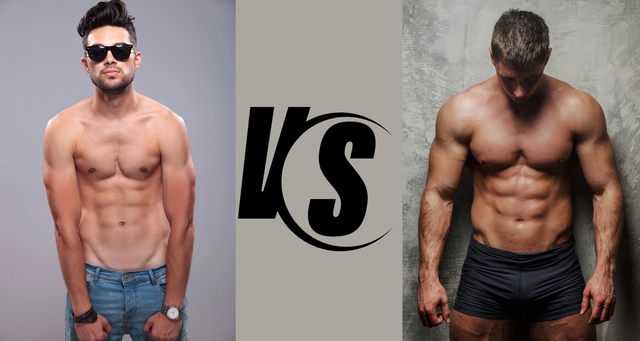
How Long Should At Home Workouts Be? Here's Our Answer
How long should your workout be? 20 minutes? An hour? Just enough time to break a sweat, or should you go until your muscles beg for mercy?
This is one of the most common questions we hear from fitness newbies and seasoned gym-goers alike. With at-home personal trainer workouts for clients becoming increasingly popular, the question becomes even more important—how much time do you really need to dedicate to your fitness goals?
What Determines the Perfect Workout Length?

The truth? There’s no one-size-fits-all answer. The ideal workout length depends on factors like your fitness level, goals, and the type of training you’re doing. But don’t worry—we’ve got the breakdown for you. Whether you’re aiming for weight loss, muscle gain, or just want to feel fitter, we’ll help you figure out the perfect workout duration.
Let’s dive in and find out how long your workouts should be—and how to make every minute count.
What affects workout length?
Before we throw out a magic number, let’s talk about what actually affects the ideal workout length. No two fitness journeys are the same, and your routine shouldn’t be based on an arbitrary time limit. Instead, it should reflect your fitness level, goals, and the type of workout you’re doing.
Your fitness level plays a huge role in how long you should be training. If you’re just starting out, shorter workouts around 20–30 minutes are a great way to build endurance without pushing too hard.
Intermediate fitness levels can typically handle workouts ranging from 30–45 minutes, mixing strength training and cardio for a balanced approach. Advanced fitness enthusiasts, on the other hand, often benefit from 45–60+ minute sessions to continuously challenge their bodies and avoid plateaus.
Your goal is another key factor in determining workout length. If weight loss is your focus, sessions of 30–45 minutes with a mix of cardio and strength training are ideal for burning calories and building lean muscle.
Muscle gain requires more structured workouts, often lasting 45–60 minutes to allow proper warm-ups, progressive overload, and adequate rest between sets. Those prioritizing cardiovascular endurance or aerobics can see significant benefits with workouts ranging from 20–40 minutes, depending on the intensity.
And if your goal is simply maintaining general fitness, a solid 20–30-minute workout can keep you in great shape with consistent movement and full-body engagement.
Not all workouts require the same time investment, either. Different training styles have different needs. High-Intensity Interval Training (HIIT) is designed for efficiency, meaning you can achieve fantastic results in just 20–30 minutes. Strength training requires more time, with optimal sessions lasting between 45–60 minutes, allowing for proper rest between exercises. If you’re focused on aerobics or steady-state cardio, workouts can range from 20 minutes to 45 minutes, depending on your endurance and heart rate goals.
Finally, time availability matters. Some days, you may only have 20 minutes, and that’s okay! The key is to use whatever time you have wisely. If you’re strapped for time, opt for an efficient full-body session. If you have an hour to spare, you can slow things down, focus on controlled strength movements, and add more mobility work. Fitness is about consistency, not spending hours training every day.
The Best Workout Durations for Different Goals

Now that we’ve covered the factors that determine workout length, let’s get into specifics. How long should your workout be? The answer depends entirely on your fitness goal.
Workouts for Weight Loss
If your goal is weight loss, workouts should be in the 30–45 minute range, with a focus on high-intensity exercises and strength training. A mix of resistance work and cardio helps create a calorie-burning effect both during and after your workout.
HIIT sessions are particularly effective for those on a tight schedule, as they deliver results in as little as 20–30 minutes. However, for those who prefer a lower-intensity approach, a steady-state cardio session combined with resistance training can still be effective when performed consistently.
Workouts for Building Muscle
For those aiming to build their body and increase strength, the optimal workout duration is typically 45–60 minutes. Strength training requires structured sets, progressive overload, and proper rest intervals to ensure muscle growth and recovery. This allows time for warm-ups, main lifts, accessory exercises, and cooldowns.
Rushing through weight training can lead to improper form and increased risk of injury, so it’s essential to allow yourself enough time to focus on quality reps rather than just cramming in exercises.
Workouts for Cardio

If you’re focused on cardiovascular and aerobic fitness, workouts can range from 20 to 40 minutes, depending on intensity.
Some people prefer steady-state cardio sessions such as running or cycling for 30–45 minutes, while others opt for shorter, high-intensity workouts that deliver cardiovascular benefits in half the time. A great approach is to alternate between long endurance sessions and short, high-intensity sprints to challenge different energy systems. This ensures a well-rounded improvement in heart health and stamina.
Workouts for Seniors
For senior fitness and mobility, workouts can last anywhere from 20 to 45 minutes, with a strong emphasis on low-impact strength training, flexibility, and balance exercises. The goal is to maintain muscle mass, improve mobility, and enhance coordination.
Shorter workouts with a focus on functional movement are highly effective, ensuring that every session supports long-term health without unnecessary strain. Gentle resistance exercises, yoga, and Pilates can all be beneficial, and consistency is more important than extended workout lengths.
Workouts for General Health
If your goal is general health and wellness, a 20–30 minute routine is often all you need. This could be a mix of strength, cardio, and mobility work to maintain full-body fitness.
Many people assume that longer workouts equal better results, but that’s not necessarily true. Consistency trumps duration, and even short, effective workouts can have a big impact if performed regularly.
No matter your fitness goal, the key to an effective workout isn’t just about the length of time you spend exercising—it’s about how well you use that time. A well-structured, efficient session will always outperform an unorganized, drawn-out workout.
How to Maximize Workout Efficiency in Any Time Frame

Now that you know how long your workouts should be based on your goals, let’s talk about efficiency.
Whether you’re squeezing in a 20-minute HIIT session or committing to a full hour of strength training, the way you structure your workout determines the results. That’s why Svetness personal trainers focus on smart training methods, intentional movement, and progressive overload. We make sure you can achieve your fitness goals faster without wasting time.
Prioritize Compound Movement
One of the best ways to maximize efficiency is to prioritize compound movements. Exercises like squats, deadlifts, push-ups, and lunges work multiple muscle groups simultaneously, which means you get more bang for your buck in every rep.
Compound exercises not only build strength but also increase heart rate, burn more calories, and improve coordination. Instead of spending extra time isolating muscles with endless bicep curls or leg extensions, incorporating compound movements allows you to cut down on workout duration while maintaining intensity.
Build In Rest Time
Another key factor in maximizing workout efficiency is minimizing rest time strategically.
While strength training requires adequate rest between sets—especially for heavier lifts—many people take longer breaks than necessary, which extends their workout time without adding extra value.
For weight loss, fat burning, or endurance, keeping rest periods short and controlled (about 30–45 seconds between exercises) can help you maintain intensity and increase calorie burn
For those focusing on building strength, slightly longer rest periods (around 60–90 seconds) are necessary to allow muscles to recover and perform optimally. However, this doesn’t mean you should be scrolling on your phone between sets! Staying engaged and focusing on form, breathing, and recovery makes all the difference.
Go for Circuit Training
Another way to make workouts more effective is by using supersets and circuits. Supersets involve performing two exercises back-to-back with little to no rest in between, while circuit training involves rotating through multiple exercises in a sequence before taking a break.
These methods save time, keep your heart rate elevated, and make workouts feel more dynamic and engaging.
For example, pairing squats with push-ups or deadlifts with overhead presses allows you to work different muscle groups efficiently while maintaining intensity.
By structuring your workout this way, you eliminate wasted time and get more done in less time.
Use a Personal Trainer for Workout Planning

Workout planning and structure also play a major role in efficiency, which is one of the many benefits of personal trainers. Walking into a workout with no plan often leads to wasted time, unnecessary breaks, and lack of progress.
Before each session, your trainer will come to you with a clear game plan—knowing which exercises, how many sets and reps, and how much weight you’ll be using—ensures that you stay focused and make the most of your time.
Working with a personal trainer removes guesswork and keeps you on track toward your goals.
Don’t Forget Recovery
Lastly, recovery and mobility work shouldn’t be overlooked. Many people focus only on the time spent lifting weights or doing cardio, but neglecting proper warm-ups, cooldowns, and stretching can lead to burnout and injury.
While recovery might not seem like a way to maximize efficiency, it plays a critical role in long-term consistency and performance. Taking 5–10 minutes before and after workouts to warm up and cool down helps prevent soreness, improves flexibility, and prepares your body to train at full capacity.
Efficient training isn’t just about working hard—it’s about working smart and ensuring that every workout supports long-term progress rather than just immediate fatigue.
Ultimately, no matter how long your workout is, making the most of every minute is what leads to real, sustainable results. Whether you’re training for 20 minutes or a full hour, focusing on quality over quantity gets the best results.
Want to make sure that every session counts? Book a consultation and get started with a Svetness personal trainer today!
Frequently Asked Questions
Is a 20-minute workout really enough to see results?
Yes, absolutely! While longer workouts have their benefits, shorter, high-intensity workouts can be just as effective—sometimes even more so. If you're pushing yourself, keeping rest periods short, and focusing on compound movements, a well-structured 20-minute workout can deliver impressive results.
Should I work out every day, or is that too much?
It depends on the type of workouts you're doing. If you’re alternating between strength training, cardio, and mobility work, working out most days of the week is perfectly fine. However, if you’re engaging in high-intensity or heavy strength training, taking at least one or two rest days per week is essential
How long should my workouts be if I’m trying to lose weight?
For weight loss, workouts should typically last 30–45 minutes, focusing on a mix of cardio, strength training, and calorie-burning exercises. That being said, shorter high-intensity interval training (HIIT) workouts can be just as effective if done correctly.
Do I really need a personal trainer for at-home workouts?
While you can work out on your own, having a personal trainer can make a huge difference—especially if you’re looking for faster results, personalized guidance, and accountability. A trainer can design workouts specifically for your goals, ensure you’re using proper form to prevent injury, and help keep you motivated.
Is it better to do one long workout or split it into two shorter sessions?
Both approaches can work, depending on your schedule and fitness goals. A single, well-structured workout (30–60 minutes) allows for better progression, muscle fatigue, and recovery time.
However, if you're pressed for time, splitting your workout into two shorter sessions—such as a 20-minute strength session in the morning and a 20-minute cardio session in the evening—can be just as effective.
Start your Svetness journey today
Get a free consultation and see how our trainers can transform your wellness journey.





